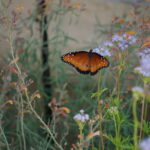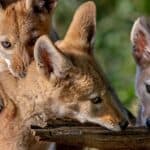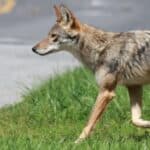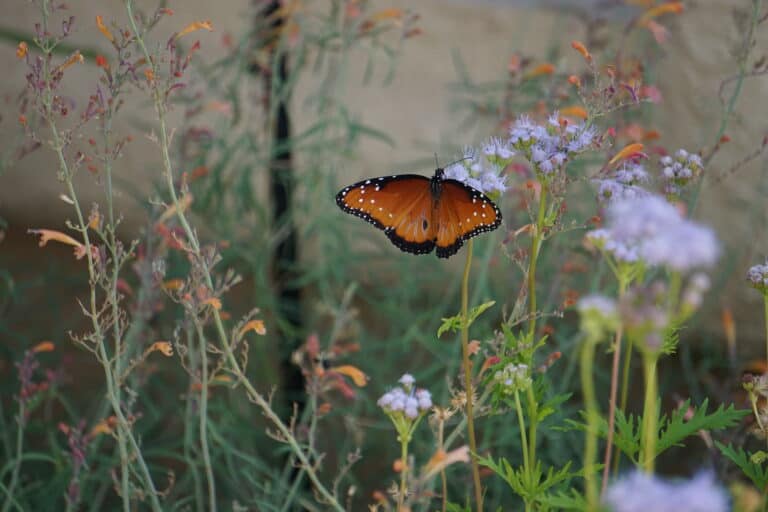Notes From the Field Blog by Madelyn Garcia, Summer Policy Intern
Ever since I was young, I had a strong affinity for the world around me. Growing up in both Manhattan and the Bronx my version of the “great outdoors” consisted of the concrete and wood-chipped parks I was accustomed to. My connection to nature was fostered by afternoons spent at my grandmother’s house, devouring the latest issue of Zoobooks (the “Wild Dogs” always being my favorite), watching Animal Planet, or playing Super Animal Genius on my Leapfrog. I would lose myself in these worlds, exploring the habitats I desperately wished were in my tiny backyard.
While I always knew I wanted to work for the planet (though, always wondering how?), it wasn’t until my senior year of high school that the pieces fell into place. Here, I first encountered the intersectionality of environmental science and realized just how expansive this interdisciplinary field was. Soon, I took what little knowledge I gained with me to Pace University, where I discovered a supportive community and a curriculum that aligned with my values.
In my first semester, I didn’t have much choice in my schedule and wasn’t expecting anything beyond the basic core classes. But when I opened my welcome packet, two courses stared back at me that would shape the trajectory of my collegiate career: Animals and Society and Flora and Fauna of the Hudson Valley.
Animals and Society introduced me to the complex ethical dilemmas surrounding human-animal relationships. We delved into a wide range of topics, including domestication, animal rights, and the impact of human activities on wildlife. A central component of the course was debating these issues and the specific aspects of the human-non-human relationship. While we were required to present both sides of these arguments, I couldn’t shake the question: Why do humans hold so much power over non-human animals? What, through our human lenses, makes it seem as though the actions they naturally perform are for our own purpose, enjoyment, and satisfaction?
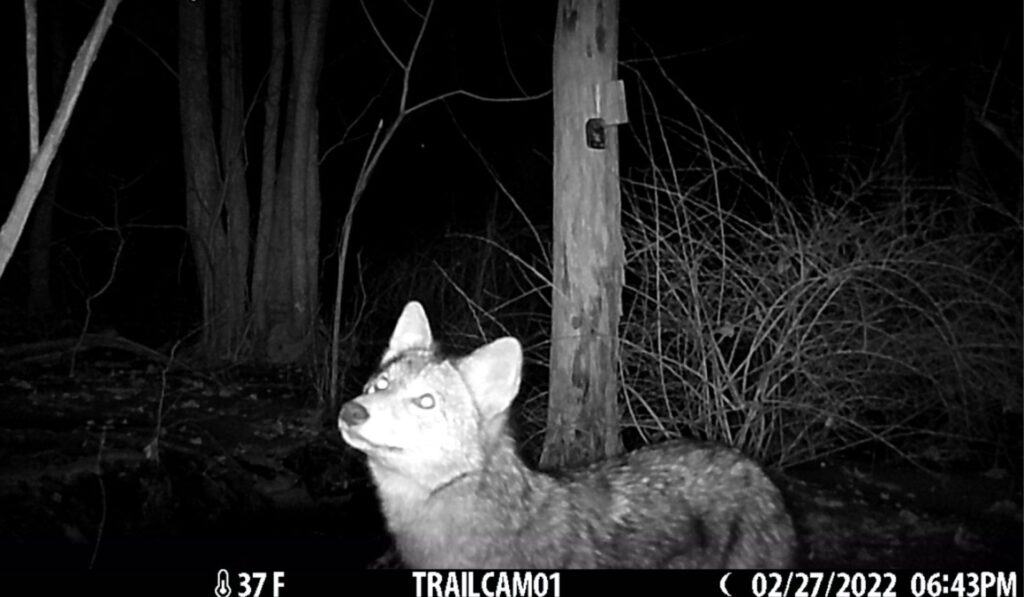
Eastern Coyote caught from the 2022 Mentoring Seminar Course at Pace University, taught by Dr. Michael Rubbo. Taken in Ridgefield, CT.
On the other side of the coin, Flora and Fauna of the Hudson Valley was one of many field-based initiatives I undertook at Pace. I spent countless hours setting up camera traps, analyzing data with ArcGIS, and immersing myself in the natural history of the Hudson Valley. A key theme that emerged in our group discussions was coexistence. I knew there had to be a connection between these two seemingly disparate fields, and I was determined to explore the possibilities in my combined degree program.
This drive led me to enroll in the Animal Advocacy Clinic, co-taught by the same professor who led Animals and Society. She saw my potential in conservation advocacy and encouraged me to dive deeper. The clinic offered a hands-on approach to learning about real-life issues in animal welfare. It allowed students to lobby and advocate for these issues in real-life scenarios, learning how the New York legislature functions and how to navigate it as lobbyists. During that 2023 semester, we transformed from students to advocates, lobbying for change in real-life scenarios. We learned the intricate workings of the New York legislature working alongside the N.Y.S. Branch of the Humane Society, gaining the tools to navigate its halls as champions for animal welfare – tackling issues like exotic pet ownership, invasive species control, and the national and state fight against barbaric wildlife killing contests (NYS Assembly Bill A02917).

Dr. Michelle Land & Professor John Cronin with Animal Advocacy Clinic students, lobbying in Albany, NY.
It was interesting to see that despite diverse academic backgrounds—ranging from computer science to psychology—we all arrived at the same conclusion: these contests are inhumane and unnecessary. Graphic videos exposed the brutality inflicted upon animals like wolves and coyotes – villainized to justify their suffering. Painful traps, cruel poisoning, and killing contests all stem from the same dreadful narrative: these creatures deserved no moral consideration. It is all justified under the guise of “community protection” or worse, entertainment.
Fear of wildlife can be considered a natural human response. I vividly recall burying myself under the covers at a particularly gruesome scene of a predator’s attempt at sustaining themself on Animal Planet, the mute button instinctively slamming down. As the scene concluded, I couldn’t help but look up, the fear still lingering. Yet, a new perspective began to emerge. They were merely trying to survive, just as we are. It’s a stark reminder that the wild is a harsh place, where every creature is fighting for its existence. My fear was rooted in self-preservation – what if something bad happened to me? But this fear pales compared to the global biodiversity crisis, with populations plummeting worldwide. I understood that this fear was a product of my human perspective, a limited view that failed to recognize the interconnectedness and survival strategies of all living beings. Can’t we extend that same empathy, acknowledging our role in this crisis, and fight for a future where both humans and wildlife can thrive?
The Animal Advocacy Clinic’s efforts culminated in the successful passing of a bill introduced in the New York State Assembly, sponsored by Assemblywoman Deborah Glick. On December 22, 2023, Governor Kathy Hochul signed the bill into law, officially ending wildlife killing contests in New York State. It was a momentous victory, but it also solidified my desire to pursue a career in conservation, particularly in a role where I could drive change.
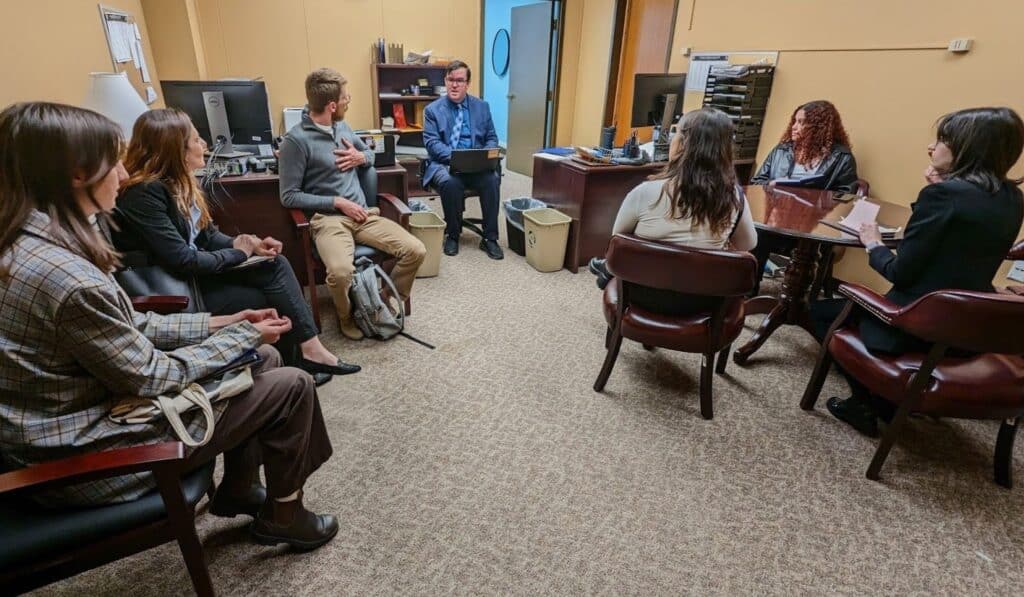
April 2023: Animal Advocacy Clinic students delivered 525 petition signatures from the Pace Community in support of bill A2917, lobbying in Albany to urge its passage to representatives of Senator Brian Kavanagh, Senator Peter Harckham’s office, and Assemblymember MaryJane Shimsky.
Discovering Project Coyote’s work to end wildlife killing contests in New York and beyond during my participation in the clinic was a turning point. Their belief that “compassionate conservation drives wildlife stewardship” resonated deeply with me. Intrigued, I began following their accounts, eagerly awaiting future opportunities which ultimately led me to apply for and be offered an internship. As a Policy Intern working alongside Project Coyote’s Carnivore Conservation Director, I had the privilege of contributing to their mission of ending wildlife killing contests nationwide. My three-month internship focused on developing a strategic campaign plan to prohibit these contests in the Great Lakes State.
This experience gave me a behind-the-scenes look at campaign planning, far different from my academic pursuits. I delved into coalition building, legal research, and the intricacies of wildlife killing contests in Michigan. I also developed an interactive ArcGIS map using data from 2018-2025. This map visualized the density of wildlife killing contests, the species targeted, the organizers involved, and other key details. Our findings revealed at least 28 annual contests statewide, but the actual number is likely much higher due to unreported events. Washtenaw and Kalamazoo counties have already taken a stand, passing resolutions condemning these cruel practices. I’m confident that the rest of the state can do the same.
It’s time for Michigan to join the growing number of states that have banned wildlife-killing contests. My journey as a curious child turned conservation advocate has shown me that powerful storytelling can bridge the gap between science and action. Together, we can work toward a future where coexistence is the norm, and all wild species are treated with the respect they deserve.
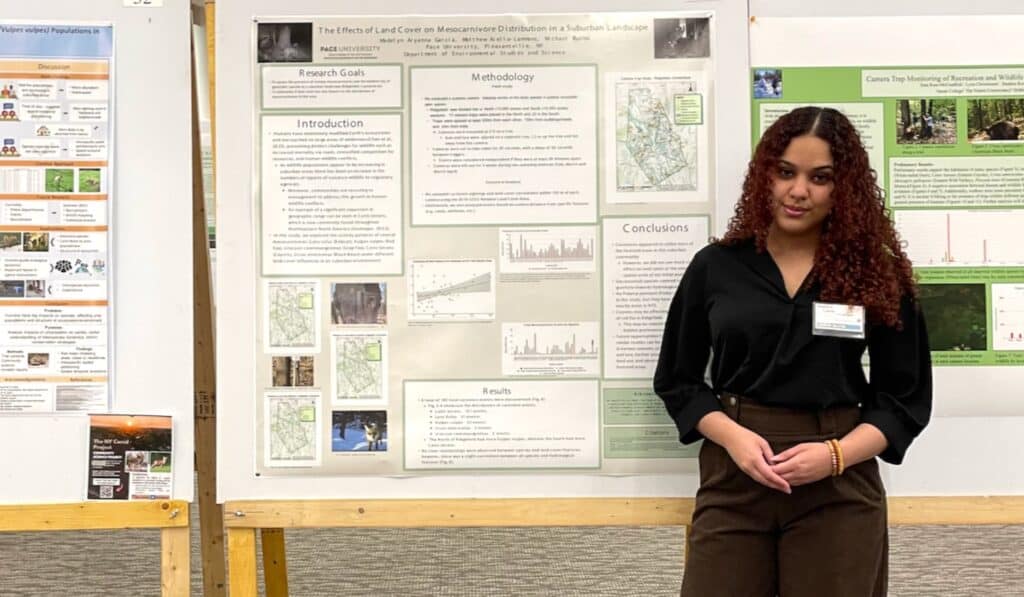
Madelyn presenting research on Mesocarnivores in Suburban Landscapes at the Northeastern Natural History Conference in Burlington, Vermont, 2023.
Madelyn Garcia is a Latina alumna of Pace University, with a strong background in wildlife conservation research, ecological assessments, ArcGIS proficiency, and active involvement in environmental policy initiatives. Her passion for effective storytelling has enabled her to bridge the gap between science and action, working on the unceded territory of the Munsee Lenape, Schaghticoke, and Wappinger peoples. As a former Policy Intern at Project Coyote, she contributed to strategic campaigns and researched hunting/conservation policies alongside the Carnivore Conservation Director.

